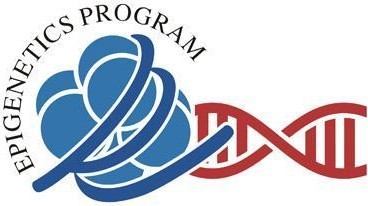Select Publications
Chaperone Nap1 shields histone surfaces used in a nucleosome and can put H2A-H2B in an unconventional tetrameric form.
D’Arcy, S., K. Martin, T. Panchenko, X. Chen, S. Bergeron, L. Stargell, B.E. Black, and K. Luger. 2013. Chaperone Nap1 shields histone surfaces used in a nucleosome and can put H2A-H2B in an unconventional tetrameric form. Mol. Cell, 51:662-677. PMID: 23973327
Post-translational modification of CENP-A influences the conformation of centromeric chromatin.
Bailey, A.O.†, T. Panchenko†, S.K. Matadda, J.J. Petkowski, P. Pai, D.L. Bai, D.H. Russell, I.G. Macara, J. Shabanowitz, D.F. Hunt, B.E. Black*, and D.R. Foltz*. 2013. Post-translational modification of CENP-A influences the conformation of centromeric chromatin. Proc. Natl. Acad. Sci. U. S. A., 110:11827-11832. (*corresponding authors; †contributed equally) PMID: 23818633
The octamer is the major form of CENP-A nucleosomes at human centromeres.
Hasson, D. †, T. Panchenko†, K.J. Salimian†, M.U. Salman, N. Sekulic, A. Alonso, P.E. Warburton, and B.E. Black*. 2013. The octamer is the major form of CENP-A nucleosomes at human centromeres. Nat. Struct. Mol. Biol., 20:687-695. (*corresponding author; †contributed equally and listed in alphabetical order) PMID: 23644596
Assembly in G1 phase and long-term stability are unique intrinsic features of CENP-A nucleosomes.
Bodor, D.L., L.P. Valente, J.F. Mata, B.E. Black, and L.E.T. Jansen. 2013. Assembly in G1 phase and long-term stability are unique intrinsic features of CENP-A nucleosomes. Mol. Biol. Cell, 24:923-932. PMID: 23363600
Esperanto for histones: CENP-A, not CenH3, is the centromeric histone H3 variant.
Earnshaw, W.C., R.C. Allshire, B.E. Black, K. Bloom, B.R. Brinkley, W. Brown, I.M. Cheeseman, K.H.A. Choo, G.P. Copenhaver, J.G. DeLuca, A. Desai, S. Diekmann, S. Erhardt, M. Fitzgerald-Hayes, D. Foltz, T. Fukagawa, R. Gassmann, D.W. Gerlich, D.M. Glover, G.J. Gorbsky, S.C. Harrison, P. Heun, T. Hirota, L.E.T. Jansen, G. Karpen, G.J.P.L. Kops, M.A. Lampson, S.M. Lens, A. Losada, K. Luger, H. Maiato, P.S. Maddox, R.L. Margolis, H. Masumoto, A.D. McAinsh, B.G. Mellone, P. Meraldi, A. Musacchio, K. Oegema, R.J. O’Neill, E.D. Salmon, K.C. Scott, A.F. Straight, P.T. Stukenberg, B.A. Sullivan, K.F. Sullivan, C.E. Sunkel, J.R. Swedlow, C.E. Walczak, P.E. Warburton, S. Westermann, H.F. Willard, L. Wordeman, M. Yanagida, T.J. Yen, K. Yoda, and D.W. Cleveland. 2013. Esperanto for histones: CENP-A, not CenH3, is the centromeric histone H3 variant. Chromosome Res., 21:101-106. PMID: 23580138
Protein hydrogen exchange: testing current models.
Skinner, J.J., W.K. Lim, S. Bédard, B.E. Black, and S.W. Englander. 2012. Protein hydrogen exchange: testing current models. Protein Sci., 21:987-995. PMID: 22544567
Protein dynamics viewed by hydrogen exchange.
Skinner, J.J., W.K. Lim, S. Bédard, B.E. Black, and S.W. Englander. 2012. Protein dynamics viewed by hydrogen exchange. Protein Sci., 21:996-1005. PMID: 22544544
Molecular underpinnings of centromere identity and maintenance.
Sekulic, N., and B.E. Black*. 2012. Molecular underpinnings of centromere identity and maintenance. Trends Biochem Sci., 37:220-229. (*corresponding author) PMID: 22410197
HJURP uses distinct CENP-A surfaces to recognize and to stabilize CENP-A/histone H4 for centromere assembly.
Bassett, E.A., J. DeNizio, M.C. Barnhart-Dailey, T. Panchenko, N. Sekulic, D.J. Rogers, D.R. Foltz, and B.E. Black*. 2012. HJURP uses distinct CENP-A surfaces to recognize and to stabilize CENP-A/histone H4 for centromere assembly. Dev. Cell, 22: 749-762. (*corresponding author) PMID: 22406139
Centromeric chromatin and the pathway that drives its propagation.
Falk, S.J., and B.E. Black*. 2012. Centromeric chromatin and the pathway that drives its propagation. Biochim Biophys Acta., 1819:313-321. (*corresponding author) PMID: 22154124


